Gene Therapy
HERESIES




CHRISTIAN CHURCH Part 3
GEORGE WASHINGTON

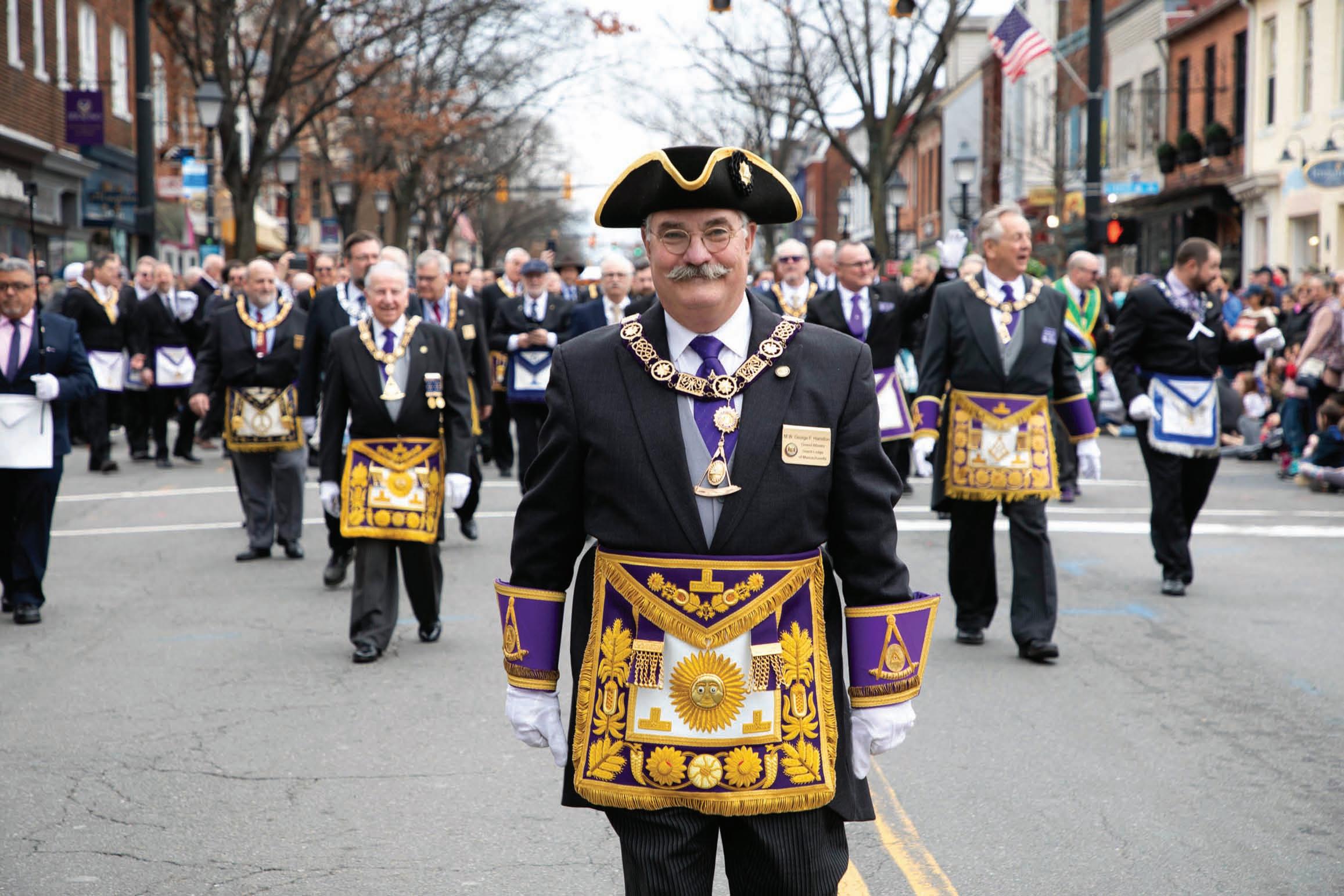
CORNERSTONE
SYMBOLISM of the SKULL
I N HOC SIGNO V I NCES
KNIGHT TEMPLAR KNIGHT TEMPLAR

ADDRESS CHANGES AND CHANGES IN MEMBERSHIP
Please report all changes in membership to the Grand Recorder:
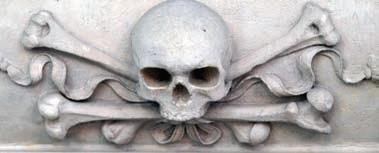
Recorder
Grand Encampment Office
3 Sugar Creek Center Blvd Ste 410
Sugar Land, TX 77478
Phone: (713) 349-8700
Fax: (713) 349-8710
E-mail: larry@gektusa.org
Magazine materials and correspondence to the editor should be sent in electronic form to the managing editor whose contact information is shown below. All photos are licensed or property of the author unless otherwise noted.
1100 W Littleton Blvd Ste 440
Littleton, CO 80120
Phone: (720) 328-5343
Fax: (720) 328-5297
E-mail: ben@knightstemplar.org
knightstemplar.org

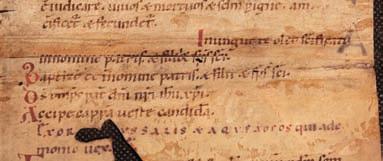

© 2023 Grand Encampment Knights Templar
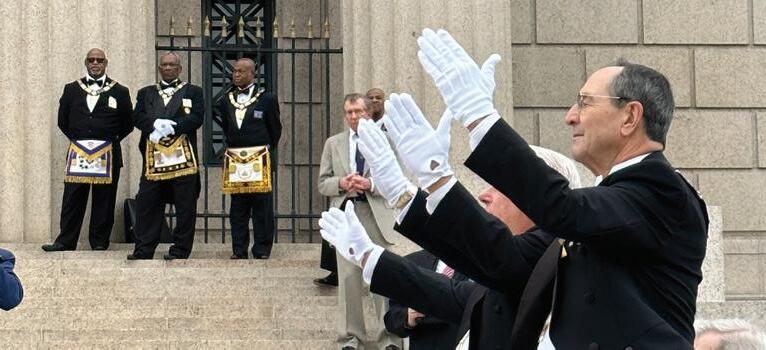

Supreme Worthy President's Message ........... 4 Prelate’s Apartment...................................... 6 Poem ............................................................. 7 Heresies, Part 3............................................ 8 George Washington Cornerstone ............... 16 Symbolism of the Skull ................................ 24 Knights Templar Eye Foundation Dr. Aaron Nagiel, Gene Therapy .................. 26 Sword of Merit ............................................... 28 Grand Master’s Clubs....................................... 30 VOLUME LXIX MAY 2023 NUMBER 5
Grand Encampment of Knights Templar of the United States of America
David J. Kussman Grand Master
David Studley
Grand Captain General and Publisher
Lawrence E. Tucker Grand
Ben Williams Managing Editor
Published for the Grand Encampment of Knights Templar of the United States of America by Laughing Lion. KNIGHT TEMPLAR CONTENTS ® On the Cover: M.W. Bro. George F. Hamilton, Grand Master of Massachusetts, in the parade at the George Washington Masonic National
Memorial. Photo by Anthony Marill Photography
Photo by Ben Williams
Message from the Supreme Social Order Of
Holy Spirit, “For when two or three are gathered together in my name, I am in the midst of them” (Matthew 18:20).
There are several Masonic affiliated organizations which ladies may join. While I am a member of most of these lovely organizations, my whole heart is in the Social Order of the Beauceant (SOOB) for many reasons, which space here will not allow me to explain fully. What I will say is that Beauceant Sisters who “get it” often will remark that there is something different when we step into an assembly room with our Sisters who profess Jesus to be Lord and Savior. In my opinion, the experience is special because we feel the presence of the
SOOB members are wives or widows of Knights Templar, or mothers, sisters, daughters, or granddaughters of a Beauceant member or Knights Templar. The mission of the Order is to promote loyal friendships, provide entertainment and recreation for our members, show by acts of loving kindness our tender solicitude for those in need of our sympathy and consolation, and to render aid to the Knights Templar when requested. Relationships are the heart of all we do. We start with our relationship with Christ which establishes the cornerstone of faith from which we build other relationships. By way of a survey, I had the privilege of receiving feedback from SOOB Sisters who attended Supreme Assembly 2022 regarding topics such as why they joined SOOB, why they remain committed to our Order, and their relationship with the Commandery. The common themes were, “A friend or family member encouraged/invited me to join” and “I keep coming back because of the beautiful friendships/relationships.” Further, we cannot help but notice that both commanderies and SOOB assemblies are stronger when there is a close, meaningful relationship between the two.
Masonry takes good men and makes them better and gives them opportunities to continue development by way of additional

4 may 2023
Supreme Worthy President the Beauceant
degree work and mentoring. The symbolism and allegory used to teach its lessons are founded on the building of King Solomon’s Temple. The workmen employed on the temple were skilled at building; the Knights of the Temple were defenders of the sacred places sanctified by our savior. Beauceant lessons, like those of the Knights Templar, come from the Master and the cross; those Sisters who embrace the lessons grow, develop, and become better wives, mothers, sisters, daughters, and friends.

When Christ is the foundation on which we build relationships with our Sisters and Sir Knights, we bend but do not break in the storms of life for we build on the Rock. The degree of our Order reminds us that even at the zenith of our strength and wisdom, our happiness and welfare depend on divine guidance and mutual assistance. Each time Beauceant Sisters open a meeting, we ask God to renew in our hearts our obligation to be friendly and charitable to each other and pray that our actions will meet His favor. We are called to love and support each other and should always seek opportunities to demonstrate our faith, loyalty, and love.
God places us exactly where we need to be exactly when we need to be there to take advantage of the opportunities that are present daily. It is a blessing to be challenged to stand firm in our faith and to hold to our values when we interact in environments that may not naturally support our ideals. These
challenges make us stronger and encourage a greater appreciation of the blessings we have. My plan as a young woman was different from God’s plan. As a young mother and high school math teacher, I never would have guessed that years later I would be working in a corporate environment where sometimes I feel like I am in the minority with respect to faith and values. I am confident God placed me on this path so that I can be a voice among others like me so that they do not feel alone. When I am weary, I am so thankful for my Beauceant Sisters who remind me of what is important and help me avoid those things contrary to our profession. Because of these Sisters, I am a better wife, mother, daughter, sister, friend, and scientist.
The lessons of faith, loyalty, and love were imprinted on me at an early age as a “Beauceant Baby” who attended meetings until the age of two. The fellowship and the love we share as Sisters is priceless and needed in this world. It is my prayer that each person we encounter will know who we are by our love for God and each other. At the closing of each meeting, when our sacred circle breaks, we take into the world the peace of God above.
(Mrs. Jon S.) Melissa Spann Supreme Worthy President Supreme Assembly Social Order of the Beauceant

5 knight templar
GUEST COLUMN
Prelate’s Apartment
Rev. Terry L. Plemons Grand Prelate of the Grand Encampment
Irecently had the opportunity to visit the Arlington National Cemetery. While there I noted a photograph of President Kennedy laying a wreath at the Tomb of the Unknown Soldier dated November 11, 1963. The President laying the wreath represented the hopes and dreams of our great nation, while humbly acknowledging the sacrifices of our unnumbered dead who paid the ultimate price for our freedoms.
Looking at the photograph, it occurred to me that not only President Kennedy, but all who surrounded him on this occasion, had little idea that in eleven short days, on November 22, 1963, the nation would be stunned by his sudden death. His body would return to the same hallowed grounds of Arlington where he had recently stood in remembrance of the honored dead.
President Kennedy was faithful to the duty at hand, focused on the moment, leading the nation in remembrance of our fallen military at the Tomb of the Unknown Solider. It was important that he led the nation in this moment, letting the worries of the past and the anxieties of tomorrow fade away to attend to the task at hand.
There is a great lesson in this simple photograph: today matters because we are not promised tomorrow. “Yet you do not know what your life will be like tomorrow. You are just a vapor that appears for a little while and then vanishes away.” (James 4:14.)
I wonder how it would affect us if we
knew today was our last day, or that we only had a time short remaining. Would we be kinder to each other; would we chase after God more earnestly? I suspect we would devote much more time to prayer, spend more time alone with God (worshiping him with a deeper sincerity), and be kinder to one another. We are all guilty of being lazy at times in faith, and in our relationship with others. The photograph of President Kennedy certainly impacted me as I thought about what he would face, when in a moment his life was taken from him.
The Prophet Micah gives us the example for all the days that lie before us, “And what does the Lord require of you? To act justly and to love mercy and to walk humbly with your God.”
Terry
Sir Knight Terry L. Plemmons Grand Prelate

6 may 2023
"Hello Dad, and Brother Too!"
by George E. Moore
Hello dad I’m on my way to Lodge, as you may well know. I love you’re watching over my earthly travels down here below!
I remember as a boy, on what you’d call “Lodge night” After dinner you’d leave Mom ‘n me, in a suit and tie For a couple hours, or sometimes more like three If you had extra business up there, or were putting on a Degree.
I’d ask you what you did up there, and who were all “the guys” You said “they’re friends you haven’t met, the rest is a surprise Someday you can petition, and I really hope you do Then all our mysteries revealed, from our fraternity unto you.”
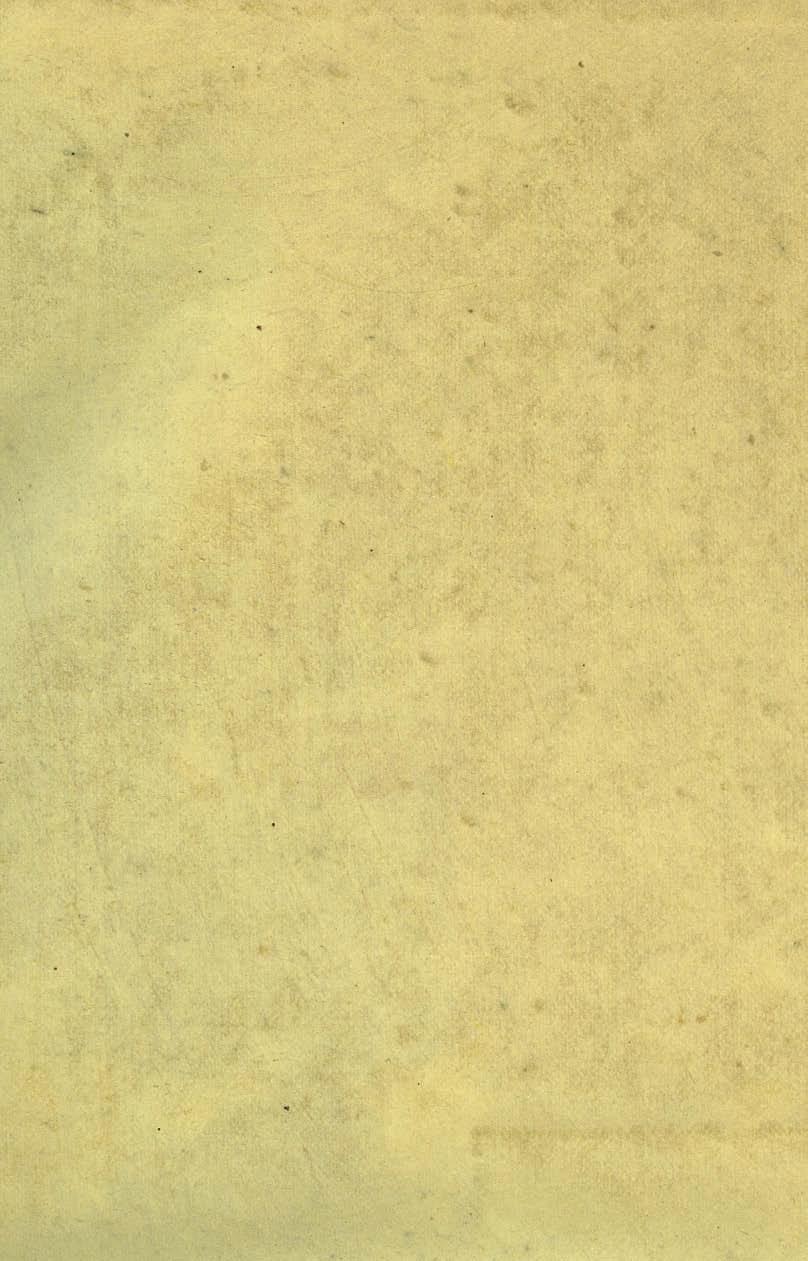
Some don’t understand us, they cry “conspiracy!” We just laugh it off as we practice charity And improve ourselves with every step, to make us better men Through brotherly love, relief and truth, again and again
The Lodge back then would host these banquets, for father and his son I’d go up to the Lodge with you, and it was so much fun The dining hall was packed, as we ate a feast This was when I knew: Freemasonry’s for me!
You’d say that your Masonic Brothers were from every walk of life. And everywhere around the globe, yes it goes worldwide. And if we'd ever need assistance, they’d lend a helping hand, Or two or three, they’ll always help in any way they can.
I wanted a petition, you said “not until you’re a man” And ‘tho you passed before I joined, I now understand All these “Masonic Secrets” that you held so dear I’m aiding all my Brothers’ needs, yes both far and near
And now I know that when I pass to that celestial Lodge above I’ll greet you once again, not just with a hug I’ll also grip your hand, the way Lodge Brothers do I’ll greet you for the first time as my dad and Brother too!
7 knight templar POETRY
Heresies
In the previous two installments of this series, we introduced and explained the historic heresies of Ebionitism , Gnosticism, and Monarchianism. In this last installment, we are going to deal with the final five categories of heresy that are still with us today from the early church.
Puritanism (aka “later Donatism”)
Not to be confused with the similarly-named “Puritan Movement” in the 1500-1600s
The Early Puritans (AD 200-300s) held a view that sacraments were only valid if performed by someone who was wholly pure and sanctified. Anyone who had ever committed any sin after baptism was to be cast out of the church and under no circumstances to be allowed back, or if they did, they would not allowed to be officials in the church. While the heresies of rebaptism and exclusions existed before, this controversy began in earnest after the Roman Emperor Decian started persecuting Christians on a large, nearly Empire-wide scale, insisting that
they either join a recognized religious group or face further persecution. Most of Decian’s worries were political, as religion was tied to patriotism, and if you were not religious, you were seen as unpatriotic since the religions all forwarded prayers and sacrifices for the health of the Empire.
The most virulent form of puritanism was Donatism, named after Aelius Donatus, who was the bishop of Carthage, one of the most important early Christian areas (now Tunis, Tunisia in North Africa). It gained prominence after the Diocletian persecutions of 312-313, in which the Roman Emperor Dioclesius demanded that he be worshipped as a god while he was still alive (other Roman emperors were worshipped after they died). He wanted property and money, and since Christians were no longer considered a sect of Judaism, they became a target. Dioclesius demanded that all people who were not part of registered religions that would object, such as Jews, burn a stick of incense to a statue of Dioclesius and call him

8 may 2023
Heresies Of The Christian Church
PART 3
 by Robert Elsner
by Robert Elsner
“My Lord and my God.”1 The penalties for not performing this rite ranged from fines to confiscation of property to execution of the Christian and sometimes the whole family. Needless to say, many people would rather burn some incense rather than to see their families impoverished or put to death. Those who burnt the incense may or may not have given up the faith and none but they could say which. Although this was the last of the great persecutions of Christians within the hundred-year span they were politically persecuted, it is the basis for our narrative that we have always been persecuted greatly within the Empire and within the world.2
Some key dates for Puritanism (aka “later Donatism”):
249-250 Roman Emperor Decian began to persecute Christians, and that caused many Christians to “lapse,” i.e., deny the faith to save their lives and property
251 Novatian teaches that the lapsed should not be readmitted to the church; some Christians admit the lapsed on easy terms
252 Cyprian argues for middle view: penance for the lapsed
255-256 Some African bishops insist on rebaptism of heretics and schismatics; Rome disagrees
311 Donatists refuse to accept new bishop of Carthage because he “handed over” the Scriptures under persecution; they consecrate a rival bishop
1. This should sound familiar as John 20:28: Thomas said to him, “My Lord and my God!”
2. Not to say that Christians were not persecuted in other countries and in other parts of the world, where such still happens today. Where we get our history and how we extrapolate it is the question presented here.
312-313 Diocletian persecutions
314 Council of Arles condemns Donatism
9 knight templar
Questions to ask:
• According to scripture, is anyone other than Jesus really free from sin? So, is anyone qualified to be a minister?
• If a person commits a sin, should we forgive them? Are there limits to forgiveness?
• Romans 3:23 tells us that “all have sinned and fall short of the glory of God.” If this is true, can anyone administer sacraments?
• Is baptism a magic trick that can be p erformed again and again every time you sin?
• Do you think that God is capricious enough to allow one person’s salvation to be dependent upon anyone but Christ? How can you make allowances for scripture being correct in the exclusivity clause, without disempowering God in His love and forgiveness?

What does Puritanism (aka “later Donatism”) look like today?
Today, many people who call themselves Christians fall victim to this heresy that only the purest of people are worthy of being ministers, and only those purest of people can administer valid sacraments. While ordained ministers have an obligation to keep themselves as pure and holy as they can, they are still human. They will sin.
It is not the validity of the minister, but the validity of God’s promise that matters in the sacraments. If someone sins because of their love for family or their fear of suffering, such sins should be more easily forgiven as a general rule.
Arianism
Arius was a very popular bishop in Alexandria Egypt, who around AD 320 started teaching that only God the Father was eternal, and that the Father was too vast and pure to appear on the earth.
Since God could not appear on Earth, He created Christ the Son out of nothing as the first and greatest creation, and then the Son created the universe, which is why they say it was not perfect. Some Arians even held that the Holy Spirit was the first and greatest creation of the Son. This is an adoptive relationship, since the Son is not of one nature with the Father, and the Holy Spirit is adopted by the Son.
Though Christ was a creation, because of His great position and authority, He was
10 may 2023
to be worshipped and even looked upon as God, even if not God. Arians asserted that the divine quality of the Son, the Logos, took the place of the human and spiritual aspect of Jesus, thereby denying the full and complete incarnation of God the Son, the second person of the Trinity. In asserting that Christ the Son, as a created thing, was to be worshipped, Arianism was advocating idolatry.

Arius was exiled to Illyria in 325 after the first ecumenical Council of Nicaea condemned his teaching as heresy. It was the greatest of heresies within the early church and developed a significant following. It is with us today in some denominations. The councils all agree that Jesus is part of the Trinity, not a sub-god like Athena popping out of Zeus or a deified human like the demi-
gods of Greece. Modernism, considered to be an important creation of the Enlightenment, asserts that reason and logic superseded all and that even if God exists, the rest is merely myth and the Bible should not be considered true. This view became pervasive in the Church, so Pope Pius X issued an encyclical: The Oath Against Modernism in 1910. All clergy, pastors, confessors, preachers, religious superiors, and professors in philosophicaltheological seminaries were required to swear the oath.3 There was huge resistance to the Oath in Germany and Austria. The Anglican Communion did not take any actions on this
11 knight templar
3. Worth reading and considering, and available at: https://www.papalencyclicals.net/Pius10/p10moath. htm
encyclical,4 and even the Roman Catholic Church removed the requirement of signing this Oath in 1967 due to pressure from more modern intellectual thinkers.
Some key dates for Arianism:
c. 318 Arius’s views gain popularity, saying that Jesus is not divine, Athanasius writes On the Incarnation, affirming the full deity and humanity of Jesus
325 Council of Nicaea, called by the first Christian Emperor Constantine, condemns Arians and affirms the divinity of Christ
328-361 Temporary triumph of Arianism; period of factions and confusion; Nicene bishops, like Athanasius, were deposed and banished temporarily
337 New Eastern Emperor, Constantius, openly embraces Arianism
c. 340 First conversions of Goths to any form of Christianity by the Arian priest Ulfilas

361 Valentian, an orthodox Christian, becomes Western emperor, and orthodoxy begins to recover lost ground
4. There is an interesting commentary on the Oath in The Living Church magazine on April 1st, 1911: “With the Pope’s resistance to the progress of infidelity under the guise of scholarship we can but sympathize; but to put all scholarship under the ban is hardly the way to win the battle. If only the Latin Patriarch were himself a scholar.” Available at:https://www.google.com/books/ edition/The_Living_Church/NyuXz-91Oe8C?hl=en &gbpv=1&dq=Anglican+Communion+response+to+ The+Oath+against+Modernism&pg=PA725&printsec =frontcover
381 Theodosius, an orthodox Christian, becomes sole emperor; Council of Constantinople affirms Nicene orthodoxy; Cappadocian Fathers put final touches on Trinitarian doctrine
Questions to ask:
• How do you view Jesus? How is He a part of God?
• What is the Log os (Word) that John began his Gospel with?
• Why does it matter that the Councils assert that Jesus is fully divine and fully human?
• Is there a divine hierarchy with God at the top and the Holy Spirit just above archangels and angels?
• Do you see Arianism still with us today?
12 may 2023
Arius of Alexandria (c.250-336)
Where? How?
• When was the last time that you prayed directly to the Holy Spirit?
• How should we relate to people of other faiths who agree with Arian views?
What does Arianism look like today?
One of the most pervasive ways that Arianism is still with us is the hierarchical view that only God the Father matters most, then the created Son, and then the lastcreated Holy Spirit.
Christ was not a creation: according to John’s Gospel, He was creator with the Father, co-eternal with the Spirit. If someone says Christ was created by God, they are likely an Arian, even if they are members of modern church organizations like the Mormons or Jehovah’s Witnesses, both of which believe Christ to be God’s first creation, but a creation nonetheless.
Monophysitism
Monophysitism gets its name from the Greek word monos, meaning one or alone, and the word physis, meaning nature. We could call this: “one-naturism.” This position says that Christ has only one nature, His humanity being absorbed by His Deity, as opposed to the position of the Church as established at Chalcedon (where the Creeds were accepted), which holds that Christ maintains two natures: one divine and one human.
Monophysitism has always been considered heretical by the Western Church and most of the Eastern Church. There are two major doctrines called Monophysite:
• Eutychianism holds that the human and divine natures of Christ were fused into one new single (mono) nature: His human nature was dissolved like sugar in
knight templar
the ocean, and thus became irrelevant.
• Apollinarism (also called Apollinarianism) holds that Christ had a human body, but the Divine Logos had taken the place of His human mind (or what we might call “being” but was called nous in Greek). Some key dates for Monophysitism:
371 Apollinarius’s views that Jesus has one, divine nature spread
381 Council of Constantinople condemns Apollinarianism
440s Eutyches begins teaching Christ has only one nature after the Incarnation – a divine nature
449 Through intimidation and bribery, a council at Ephesus (the “Robber Council”) declares Eutyches orthodox
451 Council of Chalcedon proclaims that Christ has two natures and condemns Monophysitism (reversing the Ephesian council of 449 and declaring it heretical).
Questions to ask:
• Was Jesus just a man? Was He not really a man? In either case, what would it mean for His Birth, Death, Resurrection, and Ascension?
• If Jesus was not human, could He really suffer? Could He really know Love? Why would He cry?
• Read the Nicene Creed, and ask what are we really saying?
• Read the creation stories in Genesis 1 and 2, and then the beginning of the Gospel of John. Other than the similarities of words, what else do we see about the nature of Jesus?
13
What does Monophysitism look like today?
Whether Eutychianism or Apollinarianism, this heresy is revealed in statements about Jesus being “only human” or unable to understand humanity since He was God.
The dual nature of Christ is one of the keys to the Trinitarian understanding of our faith, even though this double nature is difficult to understand. Not being able to perfectly understand is part of why we use the term “faith” instead of “knowledge.”
Pelagianism
Pelagianism (more commonly called “The Pelagian Heresy”) is among the most popular of heresies that is still with us today, with some mainstream denominations following a version of Pelagianism.
Pelagius Morgan was a British teacher in Rome in the fifth century AD. Pelagius taught that humans had the ability to fulfill God’s commands apart from God’s Grace by exercising freedom of will and doing good works. Pelagianism says that a person's free will is totally capable of choosing God and/

or to do good or bad without the aid of Divine intervention, because human nature is basically good. Thus it denies original sin: Adam only hurt himself when he fell and all of his descendants were not affected by Adam's sin.
Pelagius taught that a person is born with the same purity and moral abilities as Adam was when he was first made by God. He taught that people can choose God by the exercise of their free will and rational thought. God's grace, then, is merely an aid to help individuals come to Him. Some key dates for Pelagianism:
c. 390 Pelagius moves to Rome and is disturbed by what he sees as moral laxity
c. 410 Pelagius teaches salvation by good works; some of his followers deny original sin
c. 411 Augustine begins writing against Pelagius
412 & 416 Preliminary Councils of Carthage condemn Pelagius

14 may 2023
Pelagius Morgan (344-418)
Saint Augustine of Hippo (354-430)
418 Council of Carthage affirms Augustine’s teaching
431 Council of Ephesus condemns Pelagianism
Questions to ask:
• Does God have a role to play in your salvation? Do you need God to do anything in order for you to be saved?
• What exactly is Grace?
• If you are nice and do a lot of good things, is that enough to get you into heaven?
• What is Free Will, really?
• Does a person really have a choice to do good or evil outside of God’s plan?
What does Pelagianism look like today?
At first glance, many modern people think that this sounds like it is not too bad at all. But Pelagianism was declared a heresy by almost every council of the church since its inception because it fails to understand man's nature and weakness. We are by nature sinners. We were affected by the fall of Adam,
contrary to what Pelagius taught.
Nestorianism
Nestorianism is the error that Jesus is two distinct persons. Nestorius was a monk born in Syria who eventually became the Patriarch of Constantinople and died in 451 AD.

To him, Jesus was human but “shadowed” by a divine Christ who took care of the miracles. Nestorius also said that Mary was the mother of Jesus only in respect to His humanity and repudiated the title Theotokos, or “Mother of God.” The Council of Ephesus was convened in 431 to address the issue and pronounced that Jesus was one person in two distinct and inseparable natures: divine and human. Several groups called anabaptists, including Amish and Mennonite congregations, teach that God created Christ, had Him delivered through Mary, but that Jesus was not the physical son of Mary.5
Nestorianism threatens the atonement:

15
templar
knight
5. For an in-depth discussion, see: Cornelius, C. A. (1855). Geschichte des Münsterischen Aufruhrs. Leipzig. (History of the Munster Uprising)
Nestorius (c.386-c.481)
Mary, by Giovanni Battista Salvi da Sassoferrato
if only the human Jesus died on the cross, then the atonement is not of divine quality and thereby insufficient to cleanse us of our sins.
Some key dates for Nestorianism:
428 Nestorius objects to calling Mary Theotokos (“God-bearer”), but Cyril of Alexandria defends the term and condemns Nestorius
431 Council of Ephesus declares Mary Theotokos and condemns Nestorianism
436 Nestorius banished to Upper Egypt
451 Council of Chalcedon condemns Nestorians, who gradually move to Persia and further east to form their own church
Questions to ask:
• Why does Jesus need to be both fully human and fully divine?
• Is it OK to think of Jesus as just a really great guy and terrific teacher? What is gained, and what is lost by such a view?
• Who do you believe Mary to be in relation to God? Are you troubled by the term “God-Bearer?”
What does Nestorianism look like today?
The most common way that Nestorianism is seen today is when people talk about the Earthly Jesus as different from the Heavenly or Spiritual Jesus. Sometimes people say that it does not matter if Jesus was divine or just a really great guy who was in the wrong place at the wrong time, as His death was a tragic lesson for us about good people dying young.

This is very similar to Monophysitism,
but Nestorianism focuses on the detail of Mary as Theotokos, saying that if God had merely created Jesus with two natures, it would have been OK, but to have Him born of a woman inherently muddied the waters. Jesus was truly both God and Man, not simply a man who God did cool miracles for.
The goal of this series has been to help Sir Knights to understand the idea of orthodoxy by exploring what has been termed heresy. Our goal has not been to force views, but to seek understanding in the historical interpretation of other opinions of how to seek God. My prayers are that you have been able to learn about your own faith and draw nearer to God in your own lives. In This Sign you will Conquer.
2. CKJoeMQejpUy phene ane phnee wknudo kj phe whkue: pwk qjIpo vate ql phe oejoibue ajd kje io phe ijpeuuigibue; kje io afpen phe olecieo, ajd phe phind kje io afpen ipo fquujeoo. Auu kf phe vqupilue beukjgo pk phe phnee wknudo; pwk kf phev ane rioibue: javeuy phe oejoibue ajd van, phap deopnqcpibue wknud; ajd phe ijpeuuigibue io phio Gkd: he io jkp rioibue, bqp eridejp wiphij phe rioibue phijgo.
16 may 2023
Standard License Adobe

Observing a
Ahundred years ago, approximately 10,000 Masons congregated on Shuter’s Hill, in Alexandria, at the site once proposed for the Capitol. Ultimately, the Capitol was sited over the river – here another building would rise: A lighthouse dedicated to the brotherhood of man under the fatherhood of God. Like the Capitol, its rays would pierce the horizon.


Silence must have gripped the Brethren as President Calvin Coolidge spoke and, after, when the granite block was gently tapped with the same implement of brotherly love wielded by George Washington on the cornerstone of the Capitol back in 1793. A blessing was handed down – a consecration that, even now, informs the ceremony. Among other dignitaries present that day, past president and chief justice of the Supreme Court of the United States, and Mason, William Howard Taft, participated in the ceremonies.
Up here, the city radiates in all directions. It is a fitting place for this monument, to memorialize George
18 may 2023
by Ben Williams
Washington as a symbol of universal freedom, as a man who transcended ambition to bring the Great Experiment to the people, a Brother Mason, torch aloft, hoisting light to the world.


Schuter’s Hill, with its vista down King Street all the way to the Potomac, reaches back through history. It bears evidence of human occupation for over 5,000 years. The Pamunkey and Powhatan used the hill to organize hunting parties down through the forests and wooded tracts below, from the banks of the mighty Potomac out into the wilderness rich to the Algonquians; then came settlement from Europe. Things shifted inexorably. A plantation, a rallying point during the civil war, a golf course, a park. Once, heading south from Fort Meyer, the Wright brothers flew around here in their Military Flyer (their fifth model, built for speed for the U.S. Department of War). They topped out at 42 mph.
That same year, in 1909, Bro. Charles H. Callahan, Senior Warden of Alexandria-Washington Lodge No. 22,
19 knight templar
purchased several lots on the hill for a new home for the Lodge. Washington was the Charter Master of Lodge No. 22, when officially organized in 1788. He was serving as Master when he assumed the presidency. As a result, the Lodge collected irreplaceable artifacts belonging to him and the early United States. But the Lodge and its collection were destroyed by fire in 1871.
Callahan wanted to see a Lodge made of stone – fireproof – to house the remaining collection. Callahan wanted his Lodge to withstand the vagaries of time. It would take decades (the interior of the building wasn’t completed until 1970) but the George Washington Masonic National Memorial bears testimony to this vision which, like the temples worked by operative masons

20 may 2023
centuries before, Callahan would never see fulfilled.
“This temple and library in Alexandria is one of the great wonders of our region,” says Douglas Bradburn, President of Mount Vernon, as about 4,000 Masons looked up the granite steps in the shadow of the tower, east of the building, on a temperate afternoon in February, 2023. “[It’s] a talisman and
knight templar
testament to the vision of our forebears, a gift of the Masonic brethren across the world to the people of America, for it stands to help Americans remember and understand out inheritance, what George Washington considered the last great experiment in human happiness under civil society.”
There were no past presidents of the United States present. But Hon. James

21
Photo by Danny McHale
S. Gillmore III, 68th governor of Virginia, and member of Tuckahoe Lodge No. 347 in Richmond, shared words.
Members of the Grand Lodge of Virginia and Lodge No. 22 defiled down the steps as the piper struck out beneath a cloudy sky. They assembled in due form between the bleachers erected to host the Grand Masters from across the country who had come to pay respects to the monument. Below, on the road that cuts between the granite steps along the frontage, above the large square and compasses added in 1999, the crowd stood still. They had marched more than two miles down King Street, under the train tracks, winding round the road up Shuter’s Hill. Everyone was quiet. A large screen broadcast the proceedings. Under the rail bridge, down by the King Street-Old Town metro station, a simulcast brought the ceremony to the townspeople. The echo was faintly audible. It would highlight the local news.
“While all of you recognize this as a Masonic memorial, which it is, and a fitting tribute to our first president,” says Justin Wilson, mayor of Alexandria, “for those of us who are in Alexandria, this is a symbol of home.”

It is easy to see why. Looking up, the building dominates the skyline. The Memorial rises out of Old Town like a torch. It has become a symbol of Alexandria itself – like the famous lighthouse it was modeled after. “We know we are home when we see this building,” Mayor Wilson said.
After the speeches concluded, the ceremony began. The piper pierced the colonnade as the Brethren took their places. It seems Washington was with us – the clouds opened up. On the east side of the building, we were in shadow, but below, the city lit up. At the right of the apron, gently unfurling in the breeze, Old Glory seemed to shine.
The wardens did their part, consecrating a new stone with corn, wine, and oil, the
remnant of an ancient rite that has come down through the centuries. Then the master, with Washington’s trowel – the same one that anointed the Capitol (1798), the Smithsonian (1847), the Washington Monument (1848), the Library of Congress (1890), the National Cathedral (1907), our own House of the Temple (1911), and the United States Supreme Court (1932) – discerned the work was good work, square and true.
By the time the ceremony concluded a cold breeze whipped up from the south. The Brethren disbanded. It was a day like any other, but something seemed to have changed. We stood there, heard a few words spoken while symbolic acts were undertaken. But we had shifted something inside us. A memory was made – and one was recalled. We manifested an intent, created meaning, and called forth the future. In that moment, a silent bell was struck. It tolls through the ages.
The interior of the Capitol depicts the apotheosis of George Washington, indeed, but in Alexandria he’s brought to Earth. It’s a monument to the man, but to all humanity. It celebrates the human, yet it shows what humans can reach, beyond themselves to a more noble and glorious purpose. The Great Experiment of human happiness – of self-directed sovereignty – is alive. Evil originates in man, perhaps, but man has the tools to kindle that emptiness with the knowledge of good. So the light shines in the darkness. And Masonry has never been more relevant.
22 may 2023
 Photo by Dennis Berry
Photo by Dennis Berry
SYMBOLISM
In the Order of the Temple we are first confronted by the symbol of a skull as we assume the vigil within the Chamber of Reflection. Here you are caused to contemplate and to reflect on several emblems and questions. We are taught that the skull is a “melancholy momentum of mortality. Its frame stripped of all that once was is offered to us as the desperate sadness meant to inspire a pensive reality.”
In the tragic play, Alcestis , Euripides writes: “…Death is a debt all mortal men must pay: Aye, there is no man living who can say, if life will last him yet a single day.” Euripides draws the audience’s attention to both the certainty of death and the uncertainty of life.
Death is impartial. Death does not care if you are rich or poor, a king or a criminal. Death does not care about your ancestry, ethnicity, generosity, religion, or age. Death becomes the great leveler of man. Is this the lesson we are asked to contemplate: that the inevitability of our final breath is what the skull represents?
We next see the symbol of the skull resting upon the sacred law, the Holy Bible. Here again, the skull is presented as a symbol of mortality. But now the somber reflection of loss is replaced with hope. Hope comes to us through the presence of the Redeemer of man, our Lord and Savior. As Christ paid our wages of sin and conquered death, He liberates us into the promise of a life in the presence of God. This encouragement is the
revealed will of the Great Architect through His intercessor and the unswerving faith of truth in the Word. No matter the trials and tribulations a man must endure in this vale of tears, the promise of the Redeemer can comfort and console even the most troubled mind. Peace becomes our companion – even in our final moments.
Between the fourth and fifth libations we hear an anonymous poem. Ode to the Skull was adopted from a poem said to have been either discovered in the Museum of the Royal College of Surgeons, in London, or near a skeleton in Westminster Abby. Originally published in the Morning Chronicle in 1820, a reward of fifty guineas (approximately $7,500 in today’s currency) was offered for the identity of the author. No one claimed the poem.
In Ode to the Skull we see the ponderings and lamentations of the author. Here the skull does not represent death, but quandary. Who was this life that once occupied the skull? Was this life virtuous? Did they dream? Were they honest? Were they articulate? Such contemplation begs compassion. Every skull was once occupied by a soul having flesh and blood. They lived and experienced the same trials as any of us. The life of this skull might as well be our own. What was the legacy left? Who remembers this soul? Who will remember us?
Following the close of the ode, the commander echoes the same concepts. Once again, we see the skull offered as a symbol

24 may 2023
An essay from the Templar Ritualist course at templared.org
SYMBOLISM of the SKULL
of contemplation. The commander’s words internalize this contemplation and impel inquiry, how are we living and how will we be remembered? One is reminded of The Dash Poem, by Linda Ellis. In this poem, the author encourages us to explore the ways we spend our time. We are reminded that it is how we treat others that ultimately makes the difference. A tree is judged by its fruit: our actions define us, not our opinions, beliefs, ideas, or inspirations.
Then, as a pilgrim, we embark on a year of penance and journey to the Holy Sepulcher. We’re clothed in white robes; a skull is placed in our left hand. Now, in our journey, the skull symbolizes humility. We learn that the left side has, in all ages, been a symbol of the weakest part of man. How fitting, then, that a skull rests in the left hand – there to remind us of the frailty of man, how fragile life is. When we consider that death is the fate of all mankind, we cannot help but be humbled. The tyrant and the innocent each suffer this fate.
In The Life and Adventures of Nicholas Nickleby, Charles Dickens wrote: “Nature gives to every time and season some beauties of its own; and from morning to night, as from the cradle to the grave, it is but a succession of changes so gentle and easy that we can scarcely mark their progress.” So, the truth of it is, time marches on. We have no more control over time than we have over death. We march inevitably toward the grave. This does not leave us helpless or power-
by William E. McCraw
less against time, however. We have the power to choose how to spend the time we have. We can sow good deeds that bear generations of fruit. Or we can fade meaninglessly into oblivion.
Finally, we approach the fifth libation. Now, the skull symbolizes the bitter cup of death. We are faced with the finality of it all: the cup from which all men must drink, one that even Christ prayed would pass Him by. The question inexorably arises, is this it? Is this mortal life all that exists? Is the final lesson an uncontrollable inevitability?
No. Consider the lesson of the memento mori. Translated, this classic idiom states, “remember that you [have to] die,” or remember that we all must die. In combination with the lessons already given – and in light of Matthew 25: 36-46 – we gain a complete understanding. The skull is transformed. It becomes the ever-present reminder that, although we all must die, we can be redeemed and live again in Christ.
Life is an opportunity to expend time wisely. We humbly accept, we are designed to serve others.
Finally, the skull symbolizes possibility – that chance to choose honesty, faithfulness, and piety.
Death weeps for having to take us.
25 knight templar
Gene Blinding FOR
Aaron Nagiel, MD, PhD Assistant Professor of Ophthalmology USC Roski Eye Institute Director, Retina Service

Children’s Hospital Los Angeles, California
Six years ago, I celebrated the completion of fellowship training in retinal surgery, which capped seventeen years of education since I graduated from high school. It felt like quite an accomplishment after seemingly endless study, test-taking, and clinical rotations. But looking ahead, I also faced the daunting prospect of laying the groundwork for what would come of my thirty-plus year career in academic ophthalmology. It felt like I had climbed to the top of the mountain—only realizing that what I had climbed were just the foothills of an even bigger mountain!
I knew that I wanted to specialize in pediatric retina, and I had been offered a position at Children’s Hospital Los Angeles, affiliated with the USC Keck School of Medicine. But I also wanted to make a
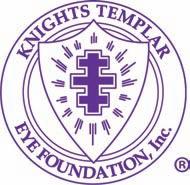
difference beyond patient care by performing cutting-edge research in retinal diseases through research. Thankfully I had received excellent training in laboratory research in my undergraduate years at Harvard and then in the MD/PhD program at Cornell and Rockefeller Universities in New York City. But I hadn’t lifted a pipette in almost seven years by that point. And I needed grant money to hire personnel and acquire reagents to get my research program off the ground. That’s where the generosity and vision of the Knights Templar Eye Foundation came to the rescue.
I crafted a research proposal to study how connections form between cells of the human retina by using adult stem cell technology to grow mini-retinas in the laboratory. The goal was to get cells of the retina
26 may 2023
Gene Therapy Blinding Retinal Diseases

to connect to one another after new treatments such as gene or cell therapy. KTEF funded a Career Starter Grant in my first year as Assistant Professor, allowing me to quickly gain momentum and then go on to receive significant funding from other organizations including the Baxter and Thome Foundations, the National Eye Institute, and Research to Prevent Blindness. None of these awards would have been possible without this “seed” funding from KTEF. But the generosity and support of the KTEF did not end there, with subsequent funding of our Predictive Medicine program and divisional endowment support. These mechanisms have allowed us to capitalize on our success as a retinal gene therapy center – the only one in California – and begin to devise new treatment paradigms for
rare retinal diseases affecting children. The idea is that we can identify clinic patients with incurable retinal degenerations, devise personalized gene editing treatments for them, and then test these treatments on their own retinal cells in the laboratory. Looking back at how far we’ve come since setting out on this path, I truly believe the Knights have provided – and continue to provide – the critical footing I need to march ahead as we devise new approaches to curing these blinding retinal diseases.

27 knight templar
KTEF
Knights Templar Eye Foundation, Inc.
Sword of
JENKINGTOWN , Pennsylvania – On February 13, 2023, Knights Templar gathered for their stated conclave at KensingtonKadosh Commandery No. 54. They came to celebrate Templary, to share in chivalric communication, and to recognize one of their own for his extraordinary charity.
Northeast Department Commander, Sir Knight John Barnes, and Grand Commander of Pennsylvania, Sir Knight Harry Jude Smith, were present to mark the occasion and administer the award.

For a single donation of $25,000 to the Knights Templar Eye Foundation, Sir Knight Herbert Schmidt received the Grand Master’s Sword of Merit. This is a substantial sword – forty-six-and-one-half inches in length and made by Marto Swords, in Toledo Spain. The unsharpened blade is 420 tempered stainless steel, polished to a mirror finish. The fuller is engraved with the Templar cross and ornate gold-inlaid accenting. The pommel is gold-plated and sports the Templar cross with 24K gold-

28 may 2023
Merit
by Ben Williams
plated inlays. Upon the hilt, the symbol of the Order – two knights upon one horse – is centered in the chappe between the quillons. The Sir Knights of KensingtonKadosh Commandery gathered round and shared their approbation, congratulating Sir Knight Schmidt for his generosity in combating childhood blindness. Our forebears engaged in combat on the battlefield but in the modern age our adversaries are no less numerous. In the war against childhood blindness, thanks to Sir Knight Schmidt and



those who continue to support the Knights Templar Eye Foundation, the Knights Templar have gained yet more ground, “that others may see.”



29
knight templar
of
KTEF
Knights Templar Eye Foundation, Inc.
January 1, 2023 – January 31, 2023
GRAND MASTER’S CLUBS
AL Thomas R. Bassett
AL William A. Carter
AL Philip A. McGee
AL Phil E. Terrell
CA Chris H. Clark
CA Mark A. Nielsen
CA David Y. Okamoto
CA Carl H. Reusser III
CO Joseph Magoffin
DC James W. Mitchell
DE John W. Merkley
FL Mark P. Brewer
FL Austin C. Drukker Jr.
FL James M. Hafling
GA Richard Tanner
GA Ezra M. Tindall Jr.
IN John S. Keeler
IN Charles M. Kostbade
IN Robert R. Storms
LA Charles R. Bertrand
LA James G. Russell
MD Donald E. Jenkins
MD John A. Rafine
ME Robert B. Ward
MI David A. Heise
MI Frederick W. Herbert Jr.
MI Jeffrey M. Lewis
MI James D. Rutherford
MN Clinton J. Christensen
MN Roberto S. Gardiner
MN Eric J. Thiem
MS Richard C. Spencer
MT Jeffrey A. Bolstad
MT James P. Wolfe
NV Charles F. Steiner
NH Thomas X. Tsirimokos
NY David D. Goodwin
NC Robert W. Erwin Jr.
ND Harold P. Bensch
ND Jeffrey N. Nelson
OH William D. Dauterman
OH William T. Gilmore
OH David K. Huff
OH Richard W. Webber Jr.
OK Newell K. Barker
OK Robert L. Fuller
OK Matthew D. McGee
PA Joseph M. Asklar
PA Clarence M. Hottenstein
PA Brenden R. Hunter
PA Gregory S. Magill
PA Herbert A. Schmidt
PA Michael A. Wolcott
TN Roy A. Chesnut Sr.
TN Billy C. Hall
TN Justin M. Huggins
TN James E. Voekel
TN Wesley A. Whitaker
TX Robert W. Bigley
TX Ricky D. Cox
TX Thomas C. Snedecor
TX Raymond M. Tomlinson
VA Joseph B. Hale
VA Scott R. Lambert
VA Herbert M. Reedy
VA Raymond D. Steele
VA Matthew J. Vepraskas
VA Ralph T. Woodrow
WA Alexander J. Jordan
WA John H. Vivian
WI James J. Burton
WI Richard J. Rausch
WI Sridhar V. Vasudevan
WY Kraig A. Kobert
WY John A. Raines
WY John B. Roden
GRAND COMMANDER’S CLUBS
AZ Richard G. Young
CA Calvin J. Patton
CT Eric H. Hoy
FL Austin C. Drukker Jr.
FL James M. Hafling
FL Raymond H. Upton
FL Luis A. Urrutia
GA Harry R. Strazzella
ID John W. Zeller Sr.
IL Keith W. Cravens
IN John T. Brock
MA/RI Charles D. Boddy Jr.
MA/RI Stephen E. Rogg
MI Larry S. Kersten
MN Roberto S. Gardiner
MO Kenneth E. Swon
MT William R. Price
NY Allen E. Boyce
NC Rodney K. Grindle Sr.
ND Jeffrey N. Nelson
ND Gregory B. Taylor
OH Burrell K. Pettet II
OK Newell K. Barker
PA Clarence M. Hottenstein
PA Bruce K. Kelley
TN Roy A. Chesnut Sr.
TN John W. Colbaugh
TX Kacy J. McCarroll
VA Joel T. Bundy
VA Joseph B. Hale
VA William Searcy III
VA Matthew J. Vepraskas
WV William C. Baun
WI Richard J. Rausch
Knights Templar Holy Land Pilgrimage for Christian Ministers

2024 – tentatively
Group A: February 5 – February 15, 2024
Group B: February 19 – February 29, 2024
Program Overview, Nomination Forms, Guidelines for Selection, Fees, etc. for local Commanderies and State Committees are available on the website.
In the Footsteps of Jesus
A Pilgrim’s Journey for Sir Knights, Ladies, Friends, and Guests
November 5 – November 15, 2023
For full information, forms, and details, go to: www.kthlp.com
KTEF

Knight Templar 3 Sugar Creek Center Blvd, Ste 410 Sugar Land, TX 77478 NONPROFIT ORG. U.S. POSTAGE PAID Knightstown, IN Permit No. 8




















 by Robert Elsner
by Robert Elsner
















 Photo by Dennis Berry
Photo by Dennis Berry














